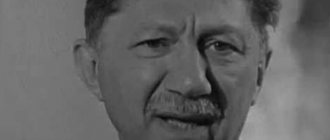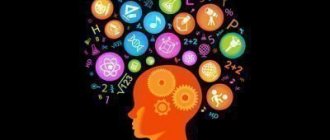Unlike other living beings, man has a dual nature. On the one hand, his behavior is influenced by features of anatomy, physiology, and psyche. On the other hand, he obeys the laws of society. If in the first case we are talking about the formation of a person as an individual, then in the second there is the development of personality. What is the difference between these processes? What is personality? Why is it formed in society? What stages does it go through in its improvement? Are there many levels of personality development? What mechanisms trigger this process? Let's consider this topic.
Human individuality - what is it?
Individuality is the characteristics of a particular person that fundamentally distinguish him from other people.
The brighter these manifestations, the more a person stands out from the crowd. Individuality cannot be imagined without another important concept that has a place in psychology and has become fundamental in many of its teachings. This is a personality. This includes a person's inherent moral traits.
An accomplished person is always perceived in a positive sense. Personal qualities:
- Artistry, the ability to present oneself in society.
- Ability to dress with taste.
- Competent gestures.
- Clear, competent speech.
- Good manners.
- Resourcefulness, the ability to behave with dignity in any situation.
- The ability to care for one's neighbor, compassion for others.
- Freedom of thought, ability to think.
- Positive outlook.
- Wisdom.
- Constant desire for self-improvement.
And this is not even a complete list, but only the most important personality qualities.
Psychologists say self-improvement is hardly the most important thing of all. Also in this series are determination, willingness to cooperate, and responsibility. The concept of personality, keeping pace with individuality, is the most perfect type of “Homo sapiens”. The moral qualities of this person reached the greatest heights. In this regard, psychologists are accustomed to asserting that not everyone who stands out from the crowd is an individual and vice versa.
A person’s individuality is a set of properties characteristic only of that particular person. Qualities come from different components: a variety of character and temperament, features of physiology, psyche, experience, worldview. Very often, the presence of certain individual traits is influenced by profession and personal preferences (in food, clothing, etc.).
Who do you see first? Your answer will show your personality!
Basic mechanisms of personality development
Speaking about personal development, it is impossible not to mention the importance of the mechanisms of its development.
In theoretical psychology that studies personality development, the concept of personality development mechanisms is associated with a complex process that is natural in nature and whose constituent elements are:
- specially organized studies and training;
- joint actions of an adult and a child in the process of personality development;
- knowledge gained in the course of resolving internal contradictions and crises;
- the process of formation of the body and psyche as a whole.
When discussing the results of personal development, researchers note the most characteristic signs for them:
- formation of neoplasms;
- internalization of these new formations into the internal plane of the individual;
- application of acquired knowledge and skills in practice in the development process.
Personality
Each of us is a Personality
Individuality of a person is uniqueness, socially significant characteristics presented in the context of the worldview of a particular person.
If we compare this complex concept with the term “person,” here psychologists tend to talk about a generic concept, which indicates origin and physiological characteristics. In this context, it is said that the creature is at the highest stage of evolution, that’s all.
When it comes to personality, psychology provides broad explanations concerning the entire spectrum of life and ideological structures. A person is understood as an individual with a certain set of genetic qualities, but they were special, we can already talk about individuality. However, in this sense, this concept has nothing to do with the individual’s individuality.
Personality in psychology presupposes a set of individual personality traits. Among them are special mercy and kindness, dignified behavior under any circumstances, even compromising ones. The relationship between the concepts of personality and individuality is interpreted by psychologists as two ways of being of the same person. In some cases, he uses all his individual qualities, in others, he tries not to be different from others, to blend in with the crowd.
The processes of developing personality and individuality often occur in parallel. They are not always typical for adolescence. Often, very young children show their individual characteristics in creativity and unusual approaches in communicating with peers and adults.
According to psychologists, personality is formed from a very early age. Many call the baby 2-3 years old. Other researchers say five years. Indeed, already in early childhood a child has his own worldview, an individual view of certain things, events, and actions of other people. Based on different assessments of what they saw, children form their own line of behavior.
It is in childhood that the most important personality traits are formed. The child’s environment, parental behavior, and upbringing contribute to this. Peers and teachers also become examples.
Why can't we do it?
Initiating progress in life can be quite difficult. This is especially true when we achieve a certain level of success. In our quest for perfection, we often fall into this trap and feel like we can't go any further.
No matter what we do, it feels like we are stuck at this level for the rest of our lives. Moreover, it may seem that we have reached the highest level possible, even if we once intended to go much further.
Feeling stagnant can be dangerous. Because it seems to us that there is no progress, we may completely lose the desire to develop. This is a vicious circle that gives rise to many restrictions and bad habits. They make us satisfied with what we have. Ultimately, this complacency limits our progress, sometimes we don’t even know what personal development is.
Ways to develop personality
“To be in the world and not have anything to indicate your existence - it seems terrible to me.”
N.V. Gogol
Fortunately, nothing was lost. Even if you feel discouraged at the moment, small but effective adjustments can help you reach new heights. All it takes is courage and the desire to achieve more.
Let's break down the walls of mediocrity. Here's what you can do about it.
Individuality in psychology
In this regard, the concept is related to the term “individual” - a representative of a community of people.
In this understanding of psychologists, the differences between people consist of physiological and mental characteristics. Among the first: height, hair color, eyes. Secondly, there is a set of abilities, a type of temperament, and a level of emotionality. The formation of individuality always takes place differently for everyone. A person becomes isolated on a personal level and goes through a process of self-determination. As a result, he feels unique and unrepeatable.
An individual personality is always original, takes an active social and creative position, and manifests itself in a large number of life forms. This often occurs during the process of socialization. First, a person learns the norms and rules of behavior accepted in society, and then forms an individual interpretation of diverse patterns of behavior and communication.
A characteristic reflection of the concept of individuality has become such epithets as creativity, originality, brightness, talent. As for personality, words such as fortitude, energy, determination, and independence are most often used here.
Psychologists often equate the concept of individuality with personality. This applies to interpretation options that are taken in a broad sense and mean all the distinctive features that are characteristic only of a particular person. But more often, scientists attribute individuality to personal properties.
Charismatic personality - what is it like?
Features of the process of personality development
Despite the fact that personal development of a person is an independent and autonomous direction of human formation, it is very closely related to physiology and characteristics of mental development, which create immediate conditions for increasing its level. The success of the development of personal qualities directly depends on the creation of appropriate prerequisites for development.
Need some teacher advice on a similar topic? Ask a question to the teacher and get an answer in 15 minutes! Ask a Question
In the process of human formation, there is a constant and continuous change in the processes of his growth and development, sensitive periods are replaced by crises, which in turn are the impetus for further qualitative development of the individual. This process resembles a change in horizontal and vertical movement, a rise followed by a decline and a smooth movement.
During the period of horizontal growth, there is an active accumulation of knowledge and skills accumulated over the previous period, then a rapid vertical transition to a new stage of development occurs, personal new formations appear, to which, over the next horizontal period, a person adapts and transfers them to the field of internal knowledge.
Human growth processes reach their greatest intensity in childhood, and with age they slow down and at a certain period of life become regressive. As studies show, in most cases, older people experience a decline in intellectual abilities, memory decreases, and muscle tissue atrophies. However, despite this, personal development can continue throughout a person’s life.
Personality Traits
Single individual
The specificity of this concept lies in the set of characteristics inherent only to it. Personality traits integrate a large set of qualities that are formed in the process of human activity.
They have both social and purely psychological characteristics. To a number of physiological personality traits
psychologists include:
- Inherited appearance.
- Behavioral features.
- Adaptive properties.
Social personality traits
:
- Cultural characteristics that leave an imprint on the characteristics of a person and form his individuality.
- Characteristic values instilled in the family.
- Stability of behavior.
- Self-esteem.
- Behavior control system.
A very important point in assessing personality traits is a person’s age.
Throughout their lives, people go through a huge number of different stages of socialization and at each stage the characteristics of an individual can change. Whether it's drastic or not is another question. More often not radically. As for the process of socialization itself, it cannot be said that it ends after the formation of personality. Even an elderly person can socialize. For example, the desire to learn how to use technical means that were not there in his youth is already a process of socialization.
A person not only learns the basics of handling a phone or laptop from a technical point of view, but also absorbs the basics of the culture of communication in the Internet space when using certain gadgets. This culture and values may differ significantly from those previously adopted. Their interpretation is manifested in a different set of new personality traits.
You don’t always find individuality among people. Georgy Mikhailovich Vitsin
Reflection in psychology - what is it?
- 3.1. Features of the development process
- 3.2. Driving forces, conditions and sources of personality development
- 3.3. Patterns of mental development
- 3.4. Mechanisms of personality development
- 3.5. Personal self-awareness
- 3.6. Structural links of self-awareness. Their genesis
Topic 3. PSYCHOLOGICAL PROBLEMS OF PERSONAL DEVELOPMENT
3.1. Features of the development process
Development
represents qualitative changes - the emergence of new formations, new mechanisms, new processes, new structures. They are characterized by the following patterns:
• progressive nature, when the stages already passed seem to repeat the well-known features and properties of the lower ones, but at a higher level;
• irreversibility, i.e. movement at a new level where the results of previous development are realized;
• development is a unity of struggling opposites, which are the driving force of the development process. It is the resolution of internal contradictions that leads to a new stage of development.
The main signs of development include:
• differentiation, i.e. dismemberment of a phenomenon that was previously unified;
• the emergence of new sides, new elements in development;
• restructuring of connections between the sides of the object. The modern idea of the mental development of the individual sees its causes in various biological and social factors, in the uniqueness of the path of development of each personality. Gradually, there is an expansion and clarification of the conceptual apparatus necessary for revealing the laws of human development. A number of concepts appear that clarify the term “development”.
1. Evolutionary development,
i.e., the appearance of something new in comparison with the previous stage - this can include neoplasms of age periods.
2. Involutionary changes.
This is the loss of previously formed mental properties and qualities that took place in the previous period. Such changes occur not only in old age, but also in adolescence and youth - as a result of the accumulation of changes that develop into neoplasms.
3. Heterochromic development.
This is a manifestation of mental qualities at different times: some functions are ahead of other functions in development.
4. Biological development.
It is believed that development is determined by hereditary and congenital factors. Congenital is determined by intrauterine development, and hereditary is determined by the emergence of a new one due to the genetic apparatus.
5. Social development.
Occurs under the simultaneous influence of the natural and social environment, the historical development of society, nationality and other factors.
6. Special development.
This is the development of mental functions, processes, personality traits within the framework of professional training, for example, the development of professional memory, thinking, attention, abilities, etc.
Personality formation is a complex process that has its own tendencies, prospects for self-determination, self-realization and includes all of the above stages.
3.2. Driving forces, conditions and sources of personality development
Under the driving forces
Personal development understands the needs of the child himself, his motivation, external stimuli for activity and communication, goals and objectives set by adults in teaching and raising children. If the goals of education and training correspond to the child’s motivation, then favorable conditions will be created for development in terms of driving forces.
Needs
people are divided according to the degree of severity and necessity, ranging from simple, lower, and ending with the highest.
1. Biogenic: the need for safety and self-preservation, emotional contact, orientation needs, the need for physical activity, play.
2. Psychophysical: needs for emotional saturation, freedom, restoration of energy.
3. Social: the need for self-esteem, communication, knowledge, self-expression.
4. Higher: the need to be an individual, moral and aesthetic needs, the need to find the meaning of life, preparedness and overcoming difficulties, the need for creation and creative work.
Each age has its own needs, the satisfaction of which is important for normal personal development. Delay in satisfying certain needs or incomplete satisfaction of them can negatively affect personality development.
One of the important aspects of the driving force is motivation.
It performs several functions:
encourages behavior;
directs and organizes it;
gives it personal meaning and significance (meaning-forming motivation).
In order for motivation to be sustainable and positive, all three functions must be present. The last function is the most important; it is central to the nature of the motivational sphere. The manifestations of stimulating and directing functions depend on what meaning the activity has for the child. Consequently, the success of the activity depends on how well the meaning-forming function is formed. Therefore, it is this function that we must first pay attention to when educating.
These motivational functions are realized by many motives, among them such as ideals and value orientations, needs, motives, goals, interests, etc. At different age stages, their significance manifests itself in different ways. This fact must also be taken into account when raising children.
The process of child development occurs in certain conditions, surrounded by objects of material and spiritual culture, people and relationships between them. In other words, the development of a child depends on the social situation.
The social situation is the starting point for all changes that occur in the development of the child during the period of growing up.
It determines the forms and paths of development of the child, types of activities, and new mental properties and qualities acquired by him. All these are the conditions for the psychological development of a child.
Indeed, the same children, whose driving forces of development are the same, can develop differently in different conditions. The more favorable the conditions for a child's development, the more he can achieve in a short period of time. Therefore, special attention should be paid to the social conditions of development.
Sources
development are the leading activity, the leading type of communication and the crisis of development.
Leading type of communication
– this is communication, as a result of which the main positive personality traits are formed and consolidated.
Leading activity
- this is the activity as a result of which the greatest successes are achieved in the development of cognitive processes and the formation of new formations occurs at a certain stage of development.
Each age period is characterized by a special type of activity. When moving from one period to another, the leading activity also changes. Modern psychologists have identified the following types of leading activities.
1. At the age from birth to 1 year, direct emotional communication between the child and adults is noted. Neoplasm – the need for communication and grasping.
2. At the age of 1 to 3 years, object-manipulative activity is present. The new formation is self-awareness (“I myself”).
3. Preschool children (from 3 to 6 years old) are characterized by play activities, role-playing games. New formations - the internal position of the schoolchild appears, voluntary behavior, personal consciousness, subordination of motives, primary ethical authorities, and the first schematic outline of an integral child’s worldview arise.
4. Educational activity is observed in children of primary school age (from 6 to 10 years). New formations - intensive intellectual development is underway, “memory becomes thinking, and perception is thinking,” the prerequisites are created for the development of a sense of adulthood.
5. Adolescence (from 10–11 to 14–15 years) is characterized by communication, which extends to various types of activities: work, education, sports, art, etc. New developments are: the emergence of a sense of adulthood, a tendency to reflection, self-knowledge, interest in opposite sex, puberty, increased excitability, frequent mood swings; strong-willed qualities are developing, the need for self-affirmation and self-determination appears. A change in leading activity leads to a crisis in development. This is due to the fact that the child’s needs are changing, but he is not yet able to satisfy them.
Development crisis
in the interpretation of L.S. Vygotsky is a concentration of sharp and major shifts and displacements, changes and fractures in the child’s personality. A crisis is a turning point in the normal course of mental development. It arises when “when the internal course of child development has completed a certain cycle and the transition to the next cycle will necessarily be a turning point...” (Vygotsky L.S., 1991).
L.S. Vygotsky believed that the essence of each crisis is the restructuring of internal experiences, relationships between the child and others, changes in needs and motivations. A crisis occurs at the junction of two age periods and characterizes the end of one period and the beginning of another.
3.3. Patterns of mental development
The patterns of mental development include unevenness and heterochrony, instability, sensitivity, cumulativeness, divergence - convergence.
Unevenness and heterochrony.
Unevenness
is the uneven development of various mental functions, properties and formations. This process is characterized by rise, stable flow and decline, and is oscillatory in nature. When they talk about uneven mental development, they mean the pace, direction, and duration of the changes taking place. It has been noted that the highest frequency of fluctuations in the development of any function occurs during the period of the highest achievements of this function. E.F. Rybalko said that the higher the level of productivity (achievements) in development, the greater the oscillatory nature of its age dynamics.
Heterochrony
means a discrepancy in the time of development of individual organs and functions. If the cause of unevenness is the nonlinear nature of the development system, then heterochrony is associated with the peculiarities of its structure and the heterogeneity of its elements.
Domestic physiologist P.K. Anokhin (1898–1974) believed that heterochrony lies in the uneven deployment of hereditary information. As an example, he cited the following fact: first, more ancient analyzers are formed, and then younger ones.
The German teacher and psychologist E. Meimann (1862–1915) showed the following: the more necessary a particular function is, the faster it develops. For example, a child learns to navigate faster in space than in time.
Development instability.
This pattern, closely related to unevenness and heterochrony, is clearly manifested in development crises. This is due to the fact that development always goes through unstable periods, including crises. Stability is possible if two conditions are met: 1) with frequent small-amplitude oscillations; 2) when there is a discrepancy in the time of development of different mental processes, functions and properties. It follows that stability is possible through instability.
Sensitivity of development.
As mentioned above, the sensitive period of development is the period when it is most reasonable to begin and conduct the education and upbringing of children (see 2.8). Domestic psychologist B.G. Ananyev understood sensitivity as temporary complex characteristics of correlated functions, sensitized at a certain moment of learning.
These periods are limited in time, and if during the sensitive period the development of a certain quality was not given due attention, then later the process of its development will be longer.
Cumulativeness.
This pattern of development is that the developmental results of the previous age period are included in the subsequent one, but with certain changes. For example, in the process of development of thinking, visual-effective thinking first develops, then visual-figurative and finally verbal-logical thinking. This process indicates a qualitative transformation of mental development.
Divergence – convergence.
These are two contradictory but interrelated trends. Divergence is about increasing diversity in the process of mental development, convergence is about increasing selectivity.
3.4. Mechanisms of personality development
Personality
- this is a person taken in the system of his psychological characteristics that are socially conditioned, manifest themselves in social connections and relationships by nature, are stable, determine the moral actions of a person that are of significant importance for himself and those around him (R.S. Nemov).
The issue of personality development has interested many scientists. As a result of numerous studies and experiments, the mechanisms of personality development were identified. These include appropriation, separation and identification.
In Russian psychology, the position has been established that personality develops through appropriation
its “comprehensive essence”: a person’s personality is also “produced,” that is, created by social relations into which the individual enters in his activity. Thus, in psychology the problem of external determination is created, which determines the development and formation of personality.
The idea of “appropriation” in itself would be mechanical if it were not presented in dialectical unity with the idea of the inner essence of man, his activity and the dependence of circumstances on the “self-realization of the individual.” People create circumstances and each other. Even in relation to himself, a person acts from a subject-subject position.
Separation
- this is the defense by an individual of his natural and human essence. In other words, it is the desire to stand out from others. Separation acts as a process of individualization.
Separation can be external and internal. Towards the outside
isolation includes physical parameters, external data, nationality, gender, etc.,
internal
- individual psychological characteristics, intellectual development, character traits, temperament, etc. A special case of isolation is alienation.
Identification
- this is the process of emotional and other self-identification of a person with another person, group, model, the subject’s experience of his similarity (identity) with the desired object. Therefore, identification acts both as a mechanism for an individual to “appropriate” his human essence, and as a mechanism for the socialization of the individual.
Children learn the norms, attitudes and behaviors characteristic of their parents, peers, and people around them. The process of identifying oneself with them occurs spontaneously. The child adopts their views and life experiences. For young children, the main source of identification is their parents, later - peers and other adults.
The identification process continues throughout life. Its source can be other people who are carriers of those qualities and forms of behavior that a person wants to develop in himself.
3.5. Personal self-awareness
Self-awareness
- this is a set of mental processes through which an individual recognizes himself as a subject of activity (I.S. Kon).
Self-awareness reflects a person’s real existence, and it is important that he learns to realistically and adequately evaluate himself. But this is not always typical for humans. Even when trying to explain his actions to other people and himself, he is not necessarily sincere. As a result, the motives that prompted him to act remain unknown to those around him, and sometimes even to himself. Therefore, self-awareness can be called a process of cognition, during which a person becomes aware of his experiences and motivations.
Self-awareness is not given at birth; it is one of the developmental processes. Over the years, as life experience accumulates, a person rethinks his life. Rethinking determines the motives of his activities and the inner meaning of the tasks that he faces along the path of life. The ability to understand what the meaning of life is, to recognize what is really important in it and what is not, to determine a life goal and strive for its implementation, to successfully solve the problems that life poses - this is what is called wisdom and what one must strive for . This is possible only with the normal development of self-awareness.
When developing self-awareness, it is very important that a person can develop a positive attitude towards himself as an individual. This can be achieved by generalizing practical knowledge about other people. The child early begins to separate people from the world around him in his consciousness, and then to distinguish one person from another, to distinguish their gestures, movements, to understand that relationships between people are built according to certain rules, etc. Thanks to this, he begins to master movements and produce actions, realizing them with the help of adult assessments. But it takes several years of life for a child to begin to develop partial forms of self-awareness. This is expressed in awareness of oneself in different situations, in relation to different things. This awareness leads to the formation of individual self-awareness.
Any change in life situation in social, work, personal life leads to a change in attitude towards oneself as an actor and subject of this situation. B.G. Ananyev believed that to realize oneself means to realize oneself not only as a psychophysical being, but also, first of all, as a worker, family man, father, educator, comrade, as part of a team.
3.6. Structural links of self-awareness. Their genesis
The structural links of self-awareness are:
1) identification of a person with his body, name, i.e., a value attitude towards the body and name; which is already noted in children of one month of age, when the baby begins to distinguish sensations emanating from his own body from sensations caused by external objects;
2) self-esteem expressed in the context of claims for recognition;
3) awareness of oneself as a representative of a certain gender, gender identification;
4) presentation of oneself in the aspect of psychological time, individual past, present and future;
5) social and moral self-esteem, which is formed in adolescence and adolescence.
The development of self-esteem in ontogenesis is carried out as follows. First, a spontaneous formation of personality occurs, not guided by self-consciousness, characterized by the appearance of multimotivation and subordination of actions. The development of personal self-awareness begins at the age of two - at this time the child already distinguishes himself as a person and the bearer of a certain name (proper name, pronoun “I”, a certain physical appearance). This process continues throughout early and preschool years. From an emotional attitude towards people, a psychological “image of the Self” begins to form. The emotional connotation of this image can be both positive and negative. The “Image of Self” is also formed by expressing one’s will (“I want”, “I myself”), which acts as a specific need of the child. Then the demand for recognition begins to appear. It can have both a positive and negative direction. Then the child begins to develop a sense of gender, and then a sense of himself in time arises. He has a psychological past, present and future. He begins to treat himself differently, and the prospect of developing himself opens up before him.
Let's consider the stages of development of self-awareness.
In early childhood
(from 1 year to 3 years)
the formation of self-awareness occurs.
The child begins to recognize himself in the mirror, respond to his name, and actively use the pronoun “I” - that is, he recognizes himself as a person.
Developing self-awareness will lead to the formation of self-esteem.
It is after realizing himself as an individual that the child has the need to compare himself with other people, on the basis of which self-esteem is formed. At this age, self-esteem is a purely emotional formation; it does not contain rational components and is based on the child’s need for emotional security and acceptance. And since parents often admire their child and praise him, children’s self-esteem in early childhood is usually high.
In preschool childhood
(from 3 to 6–7 years)
the formation of self-awareness continues,
which is considered the main new formation of this age. The child’s idea of himself, his “I,” and his place in the system of social relations changes. When a child becomes aware of himself and separates himself from the world around him, he has the desire to actively influence situations and change them the way he himself wants. He begins to realize his experiences (“I am cheerful,” “I am angry,” etc.), and awareness of himself in time occurs (“I am small,” etc.). (For more information on building self-awareness, see topic 7.)
At primary school age
(from 6–7 to 10–11 years old) the development of a child’s self-awareness is greatly influenced by the assessment given by the teacher for completing work or evaluating his behavior. Focusing on the teacher, the child begins to consider himself an “excellent” student, a “C” student, a “B student”, a good or average student, endowing himself with a set of qualities corresponding to the group to which he classified himself.
From this we can conclude that the assessment of academic performance becomes an assessment of personality and affects the social status of the child. Therefore, excellent and “good” students develop high self-esteem, while low-achieving students develop low self-esteem, since constant failures and bad grades reduce self-confidence and self-confidence.
In order for self-esteem to be adequate, it is necessary to develop in any child, regardless of academic performance, a sense of competence, self-esteem, and responsibility.
During adolescence
(from 10–11 to 14–15 years)
the development of self-awareness, the formation of an ideal personality
is aimed at a person’s awareness of his personal characteristics. This is determined by the teenager’s special, critical attitude towards his shortcomings. A teenager’s “I” is usually made up of the qualities and virtues of other people that are especially valuable in his eyes. But since a teenager’s role models can be both adults and peers, the ideal image turns out to be contradictory. Perhaps this is the reason for the teenager’s inconsistency with his ideal, which is a reason for worry.
At this age, adolescents develop a tendency towards self-knowledge (reflection).
He begins to compare himself with other people (adults and peers), be critical of himself, and goes through a lot of emotional experiences, as a result of which his self-esteem is formed and his revenge in society is determined.
As a rule, younger adolescents have contradictory self-esteem, so their behavior is characterized by unmotivated actions. (See topic 9 for more on this.)
In youth
(from 15–16 to 20 years) the formation of self-awareness and a stable image of “I” occurs. Scientists believe that the reason for this development is that at this age the development of abstract logical thinking, the discovery of the inner world occurs, the image of the perceived person changes, a feeling of loneliness appears, an exaggeration of one’s uniqueness and stability over time.
I.S. Kohn noted that the image of “I” is a social attitude consisting of three interrelated components: 1) cognitive (knowledge of oneself, idea of one’s qualities and properties); 2) emotional (assessment of these qualities and associated pride, self-esteem, etc.); 3) behavioral (practical attitude towards oneself). The process of developing self-awareness is very complex, and not everyone experiences it smoothly and painlessly. (This process is described in more detail in topic 10.)
During early adulthood
(from 20 to 40 years) the development of self-awareness, self-esteem and “I-concept” continues. This process is influenced by the individual’s self-definition as a sexual partner, spouse, parent, professional and citizen (for more information on this, see topic 12).
During middle adulthood
(from 40 to 60 years) self-awareness is enriched with new images, self-esteem acquires a generalized character, because the “I-image” of a developing personality turns into a “I-image” associated with the development of children, students, colleagues and other people (see also topic 12).
During late adulthood
(60 years and older) a person integrates his past, present and future. And if his “I-concept” is positive and active, then his personal development will continue (see also topic 12)
Table of contents
Personality development
This process takes place at the stage of personality formation, the so-called socialization.
Not only teachers and educators, but also the child’s parents are responsible. However, some teaching principles and methods are purposefully designed to form qualities and personality traits in a young person. But we cannot do without the concept of personality development. These processes must go in parallel.
Today, schoolchildren and even kindergarten children receive enormous opportunities in the formation of individuality, in contrast to the recent Soviet past of our society, where everything was done literally as a carbon copy. It was impossible to differ from the masses. In a modern school there are a large number of tasks that allow you to be smart and find innovative solutions.
At the same time, children receive expanded knowledge in subjects. Teachers are increasingly forcing them to talk about the events or facts of history being studied. All this tirelessly shapes individual characteristics in the child’s personality, including the psyche. Individuality is not born. Almost all psychologists talk about this.
Main stages of individuality development:
- Formation of special views on things. In this case, the child first learns important details about an event or object and then begins to express his attitude. At the first stages, it may not differ from the manifestations of peers, but gradually individual traits develop.
- When there is already a certain worldview and a person or child can interpret certain events based on such ideas. And at this stage, individuality is formed, since traits and qualities change under the influence of various factors.
In fact, the process of socialization contributes to the development of individuality and special character traits of a young or psychologically mature person.
Manifestations
Psychologists call the following signs of individuality depending on the level of manifestation.
At the appearance level:
- your style of clothing;
- the ability to add zest to an image;
- a feature of appearance that a person has managed to turn into an advantage (for example, Canadian fashion model Winnie Harlow stands out from other models with her skin, as she suffers from vitiligo).
At the behavioral level:
- the ability to delicately defend one’s own point of view, while respecting the opinions of others;
- establishing unique interpersonal relationships;
- original ways of meeting people and communicating;
- features in gestures, facial expressions, speech that distinguishes a person from others;
- contribution to the culture and spiritual development of the city/country/world.
At the level of the inner world:
- adequate self-esteem;
- rich inner world;
- own concept of worldview;
- formation of a personal point of view on everything that happens around;
- creativity;
- unique perception of the surrounding world;
- constant self-development;
- high self-control, strong character, iron willpower.
At the level of mental characteristics:
- high IQ, broad outlook, non-trivial thinking;
- phenomenal memory;
- rich imagination;
- extraordinary abilities;
- the ability to control one’s own emotions;
- rare accentuation of character.
You should also know that the qualities of individuality can be both positive (basically, they were listed above) and negative. The latter include pathological accentuations of character. For example, a tendency to dye your hair in different brightly poisonous colors in order to stand out from the crowd. Or demonstrative violation of the rules of behavior in society in order to attract attention. Or actions that shock the public (Van Gogh, for example, cut off his ear). Yes, such people are different from others, but their individuality is pathological.











